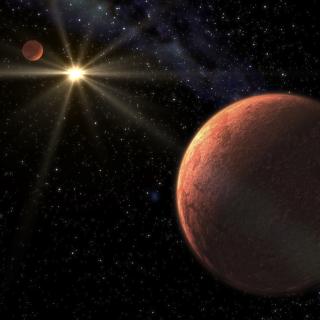Bibcode
Lodieu, N.; Béjar, V. J. S.; Rebolo, R.
Referencia bibliográfica
Astronomy and Astrophysics, Volume 550, id.L2, 4 pp.
Fecha de publicación:
2
2013
Revista
Número de citas
17
Número de citas referidas
17
Descripción
Aims: The aim of the project is to contribute to the
characterisation of the spectral energy distribution of the coolest
brown dwarfs discovered to date, the Y dwarfs. Methods: We
obtained z-band far-red imaging for six Y dwarfs and a T9 + Y0 binary
with the OSIRIS (Optical System for Imaging and low Resolution
Integrated Spectroscopy) instrument on the 10.4-m Gran Telescopio de
Canarias (GTC). Results: We detect five of the seven known Y
dwarfs in the z-band, infer their optical-to-infrared colours, and
measure their proper motions. We find a higher dispersion in the z - J
and z - H colours of Y0 dwarfs than in T dwarfs. This dispersion is
found to be correlated with H - w2. The high dispersion in the
optical-to-infrared colours of Y dwarfs and the possible turnover
towards bluer colours may be a consequence of the presence of sulfide
clouds with different thicknesses, the depletion of alcalines, and/or
gravity effects.
Proyectos relacionados

Estrellas de Baja Masa, Enanas Marrones y Planetas
Se investigan los procesos que conducen a la formación de estrellas de baja masa, enanas marrones y exoplanetas y caracterizar las propiedades físicas de estos astros en varias etapas evolutivas. Las estrellas de muy baja masa y las enanas marrones son probablemente los objetos más numerosos de nuestra Galaxia, pero no por ello están
Rafael
Rebolo López

Exoplanetas y Astrobiología
La búsqueda de vida en el Universo se ha visto impulsada por los recientes descubrimientos de planetas alrededor de otras estrellas (los llamados exoplanetas), convirtiéndose en uno de los campos más activos dentro de la Astrofísica moderna. En los últimos años los descubrimientos cada vez más numerosos de nuevos exoplanetas y los últimos avances
Enric
Pallé Bago